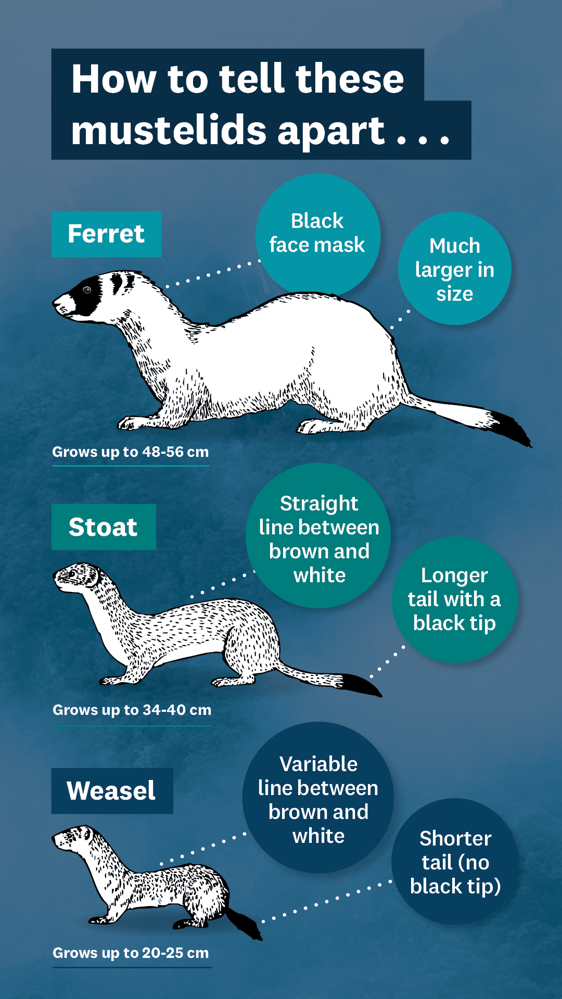-
-
-
-
-
-
-
-
-
-
Weasels
-
-
-
-
-
-
-
-
-
-
-
-

Weasels
| Common name: | Weasel |
|---|---|
| Scientific name: | Mustela nivalis |
| Management programme: | Site-led |
Weasels are only considered pests in the site-led programmes in Dunedin. They have contributed to the extinction of some native birds and are also a major cause of the decline of many other native birds. They were introduced into New Zealand in the 1880s to control rabbit numbers.
Weasels (part of the mustelid family) are the smallest and least common mustelid. Males can grow to about 20cm. Their fur is brown with a white undercoat, often with brown spots and their tails are short and brown.
Under Otago’s pest plan weasels (referred to as mustelids) are only classified as a pest in the site-led areas, Otago Peninsula, West Harbour/Mt Cargill, Quarantine Island and Goat Island.
The goal is to assist communities to progressively control weasels in these areas to prevent or improve on damage to the indigenous ecosystem values at these sites.
There is only one rule for weasels that applies to the site-led areas and that is that no one can keep, hold, enclose or otherwise harbour weasels in these areas. You also can’t bring them into the site-led areas.
ORC will take a lead role in supporting the goals of community groups and agencies in site-led areas in relation to weasels. This may be through advice, education, funding, service delivery or requiring landowners to undertake control when needed.
Trapping is the main method for mustelid control.




